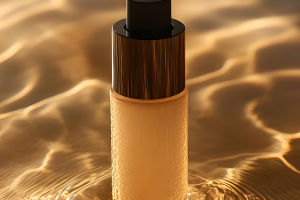Colors communicate much more than we realize, especially in professional settings. The right color can influence how others perceive you—whether as confident, approachable, or authoritative.
Choosing appropriate colors for your work attire helps you align your image with the occasion and your role, enhancing your professional presence.
Have you ever wondered how your clothing color choices impact your workplace success? Let's dive into how to master this important aspect of office dressing.
Understanding the Workplace Environment
Before selecting colors, it's essential to understand your workplace culture. Is your office formal and traditional, or creative and casual? In conservative industries like finance or law, neutral and muted tones often dominate. Meanwhile, creative fields allow for bolder, brighter colors. Knowing these nuances helps you dress appropriately while expressing your personality.
Neutral Colors: The Foundation of Professionalism
Neutral colors such as black, navy, gray, beige, and white form the backbone of most professional wardrobes. These colors convey seriousness, reliability, and authority. Black and navy are classic choices for suits and dresses in formal meetings, interviews, or presentations. Beige and gray offer softer alternatives for everyday office wear, allowing you to appear polished without being overpowering.
Using Bold Colors to Make a Statement
In the right context, bold colors can showcase confidence and creativity. For example, a deep red blouse or a royal blue tie can add energy to your outfit and grab attention in meetings or networking events. However, it's wise to pair such colors with neutrals to maintain balance and professionalism. Avoid overly bright or neon tones that may distract or seem unprofessional.
Colors That Promote Approachability
If your role involves teamwork, customer interaction, or leadership, colors like soft blues, greens, and pastel shades can foster approachability and calmness. Blue symbolizes trust and dependability, making it a top choice for business casual attire. Green offers a refreshing and balanced vibe, while pastels soften your appearance, helping others feel comfortable engaging with you.
When to Choose Warm vs. Cool Tones
Warm colors—such as red, orange, and yellow—exude energy, enthusiasm, and warmth. They're great for energizing presentations or brainstorming sessions. Cool tones—like blue, purple, and green—convey calmness, stability, and thoughtfulness, perfect for focused work or client meetings. Depending on your daily tasks or the message you want to send, switch between these color families to enhance your impact.
The Role of Patterns and Color Combinations
Solid colors are usually safest in formal environments, but subtle patterns can add interest without losing professionalism. Think pinstripes, checks, or delicate prints in muted shades. When combining colors, stick to a maximum of three per outfit to avoid clashing. Use color theory basics—such as complementary colors on opposite sides of the color wheel—to create harmonious and eye-catching looks.
Adapting Colors for Different Occasions
Formal meetings and interviews call for classic, understated colors that project competence—black, navy, and white are excellent choices. For office parties or casual Fridays, you can experiment with lighter hues or seasonal colors to show personality. For important presentations or leadership roles, consider incorporating bold colors carefully to assert confidence.
Matching your outfit to the occasion signals emotional intelligence and social awareness.
Seasonal Color Choices
Just as nature changes with the seasons, so can your wardrobe colors. In spring and summer, lighter and brighter shades like pastel pinks, sky blues, and soft yellows feel fresh and optimistic. During fall and winter, deeper tones like burgundy, forest green, and charcoal gray bring warmth and sophistication. Aligning your colors with seasons not only looks stylish but also keeps your appearance relevant and visually appealing.
Practical Tips for Building a Versatile Color Wardrobe
Start by investing in a capsule wardrobe of neutral basics. Gradually add accent pieces in colors that complement your skin tone and personality. Experiment with scarves, ties, or jewelry to introduce color without overwhelming your outfit. Always consider the message you want to send and the setting you will be in. Keeping a color diary or mood board can help you plan outfits efficiently.
Final Thoughts: Color Your Career Success
Choosing the right colors for your workplace attire is more than just fashion—it's a strategic move that can influence your professional relationships and opportunities. By understanding your environment, balancing bold and neutral tones, and adapting to occasions, you create a powerful image that speaks volumes before you even say a word.
What's your favorite work color combo? Share your thoughts or questions below, and let's continue the conversation about dressing smartly and stylishly!


